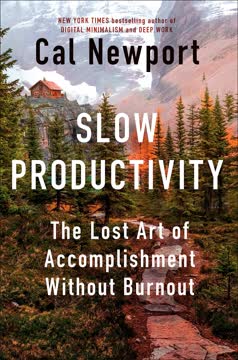Key Takeaways
1. Identify and neutralize the seven types of workplace jerks
Most of us have worked with someone who had an outsized effect on our emotional well-being.
Understanding jerks is key. Workplace jerks come in various forms, each with distinct behaviors and motivations. The seven main types are:
- Kiss Up/Kick Downers
- Credit Stealers
- Bulldozers
- Free Riders
- Micromanagers
- Neglectful Bosses
- Gaslighters
Recognizing patterns is crucial. By identifying these types, you can develop targeted strategies to deal with them effectively. Each jerk type requires a different approach, from confrontation to building alliances or setting clear boundaries.
Prevention is better than cure. Learning to spot early warning signs can help you avoid becoming a victim or unwitting enabler of workplace jerks. This knowledge empowers you to create a more positive and productive work environment for yourself and your colleagues.
2. Kiss Up/Kick Downers: Beware of those who climb by stepping on others
Kiss up/kick downers have a singular goal in mind: to climb to the top by any means necessary.
Spot the pattern. Kiss Up/Kick Downers treat superiors with charm and respect while undermining peers and subordinates. They excel at:
- Reading social situations
- Finding commonalities with powerful people
- Asserting power early in new groups
Protect yourself and others. To counter Kiss Up/Kick Downers:
- Find well-connected allies who can provide perspective
- Document instances of mistreatment
- Create physical and psychological distance
- Approach supervisors strategically, focusing on patterns of behavior
Build a strong network. Developing broad connections across the organization can help insulate you from the negative effects of Kiss Up/Kick Downers and provide support when needed.
3. Credit Stealers: Protect your ideas from wolves in sheep's clothing
Credit stealers are wolves in sheep's clothing—they are our teammates and mentors who look out only for themselves.
Guard your innovations. Credit Stealers often start small, testing the waters before moving on to bigger thefts. They may:
- Overclaim credit in group settings
- Underclaim credit to appear humble
- Take advantage of ambiguity in team contributions
Establish your voice. To protect yourself:
- Speak up early and often in meetings
- Cultivate "advice ties" – people others go to for guidance
- Focus on solutions, not just problems
- Recognize and echo others' contributions
Create clear processes. Implement systems to track individual contributions, especially in team settings. This can include:
- Regular "fairness checks"
- Documenting who contributed what
- Rewarding the process, not just outcomes
4. Bulldozers: Stand firm against those who dominate decisions
Bulldozers are seasoned, well-connected employees who aren't afraid to flex their muscles to get what they want.
Recognize bulldozing tactics. Bulldozers often:
- Assert power early and often
- Make teams reliant on their expertise
- Exploit conflicts between managers
- Target weak or conflict-averse bosses
Stand your ground. To counter bulldozers:
- Speak up early in meetings and hold your ground
- Document talking time to show imbalances
- Use the bulldozer to solve the problem by involving them in policy changes
- Form alliances with coworkers to present a united front
Implement protective measures. To prevent bulldozing:
- Rotate important roles to prevent monopolization
- Set clear decision-making procedures before discussions begin
- Designate a timekeeper for meetings
- Control the bulldozer's spotlight by giving them specific, time-limited roles
5. Free Riders: Recognize and address workplace slackers
Free riders are experts at doing nothing and getting rewarded for it.
Spot the freeloaders. Free Riders often:
- Take on work that appears important but requires little effort
- Thrive in teams with conscientious members who pick up slack
- Become early "superstars" and then coast on past success
- Perform well only when the boss is watching
Create accountability. To address free riding:
- Conduct regular "fairness checks" to track individual contributions
- Encourage healthy social comparisons within teams
- Reward the process of work, not just outcomes
- Confront free riders privately, focusing on their strengths and team goals
Prevent systemic issues. Some workplace cultures inadvertently encourage free riding. Counter this by:
- Avoiding over-rewarding individuals without ongoing performance checks
- Ensuring bosses stay connected to their teams
- Creating clear expectations for ongoing contributions, especially for high-status team members
6. Micromanagers: Reclaim control from overbearing bosses
Micromanagers are impatient taskmasters who disrespect your personal space and time.
Understand the root causes. Micromanagers often:
- Believe more monitoring equals better performance
- Lack proper management training
- Are driven by fear of failure or losing control
- Have too many reporting layers in the organization
Communicate effectively. To address micromanagement:
- Have a conversation about big-picture goals and how your work fits in
- Set mutually agreed-upon expectations
- Avoid broad generalizations when discussing their behavior
- Schedule regular check-ins to maintain alignment
Set clear boundaries. Establish:
- Clear work hours, especially for remote or flexible work
- Priorities for tasks and feedback
- A system for delegating appropriate tasks to alleviate their workload
7. Neglectful Bosses: Navigate the challenges of absent leadership
Neglectful bosses hate being out of the loop. But for lots of reasons (micromanaging is one), they often are.
Recognize the cycle. Neglectful bosses often follow a pattern:
- Long periods of neglect
- Anxiety buildup from being out of the loop
- Sudden surge of control to alleviate anxiety
Take initiative. To manage a neglectful boss:
- Use "need-nudging" to clearly communicate your needs within a reasonable timeframe
- Create a shared calendar for your boss to easily schedule meetings
- Offer to take on some of their work to free up their time
- Find other experts to supplement your boss's guidance
Build independence. While addressing neglect:
- Develop a strong network of "advice ties" within the organization
- Prioritize your tasks and clearly communicate these priorities to your boss
- Take initiative on projects while keeping your boss informed of progress
8. Gaslighters: Defend yourself against psychological manipulation
Gaslighters lie with the intent of deceiving on a grand scale.
Recognize gaslighting tactics. Gaslighters often:
- Isolate victims by making them feel special or destroying their self-worth
- Start with small lies and escalate over time
- Make victims question their reality and memories
- Cover their tracks and build alliances with powerful people
Protect yourself. To counter gaslighting:
- Document events and conversations in real-time
- Slowly rebuild your social network, starting with close colleagues
- Find a "social referent" – a well-connected person who can validate your experiences
- Approach others asking for feedback, not directly accusing the gaslighter
Escape safely. When leaving a gaslighting situation:
- Build evidence quietly over time
- Avoid direct confrontation until you have a solid exit strategy
- Seek support from HR or higher management with documented evidence
- Be prepared for the gaslighter to retaliate or spread misinformation
9. Become an effective ally against workplace jerks
The antidote to jerks at work is friends at work.
Recognize ally types. There are four main types of workplace allies:
- Virtue Signalers (all talk, no action)
- Dramatic Saviors (well-intentioned but counterproductive)
- Actionless Observers (avoid involvement)
- Effective Allies (provide meaningful support)
Be an effective ally. To support colleagues dealing with workplace jerks:
- Offer private support and advice
- Help document incidents and patterns of behavior
- Connect victims with appropriate resources or higher-ups
- Advocate for systemic changes to prevent future issues
Create a supportive culture. Encourage a workplace where:
- People feel comfortable speaking up about issues
- There are clear processes for addressing workplace conflicts
- Allies are recognized and valued for their support
- Jerk behavior is consistently addressed and not tolerated
10. Implement strategies to create a healthier work environment
Expect to feel more empowered and less anxious. Gone will be the days where you tiptoe around your jerk, coming to the office only when they're gone, or climbing the stairs to avoid seeing them in the elevator.
Foster open communication. Encourage:
- Regular team meetings to discuss workflow and interpersonal dynamics
- Anonymous feedback systems to surface issues early
- Clear processes for conflict resolution
Implement structural changes. Consider:
- Rotating leadership roles to prevent power concentration
- Creating clear accountability measures for all team members
- Establishing mentorship programs to support new employees
Lead by example. As a leader or colleague:
- Address jerk behavior promptly and consistently
- Recognize and reward collaborative, supportive behavior
- Seek feedback on your own behavior and be open to change
By implementing these strategies, you can create a more positive, productive, and jerk-resistant workplace. Remember, change often starts with individual actions, so be the catalyst for a better work environment.
Last updated:
FAQ
1. What is Jerks at Work by Tessa West about?
- Explores toxic coworkers: The book examines various types of toxic coworkers and bosses, explaining their behaviors, motivations, and the impact they have on workplace dynamics.
- Research-based strategies: Tessa West, a social psychologist, grounds her advice in scientific studies and real-world examples, offering practical tools for handling difficult people at work.
- Taxonomy of jerks: The book categorizes workplace jerks into seven main types, providing a framework for understanding and addressing each.
- Focus on workplace well-being: The ultimate goal is to help readers regain peace of mind, improve their work environment, and foster healthier professional relationships.
2. Why should I read Jerks at Work by Tessa West?
- Addresses common workplace issues: Most professionals encounter toxic coworkers, but few know how to deal with them effectively; this book fills that gap with actionable, evidence-based advice.
- Empowers through understanding: By revealing the motivations and tactics of workplace jerks, readers can move from avoidance or ineffective confrontation to strategic solutions.
- Applicable to all levels: The strategies are designed for everyone, from entry-level employees to seasoned leaders, making the book relevant across career stages.
- Improves workplace relationships: Applying the book’s guidance can lead to better communication, stronger boundaries, and more supportive networks at work.
3. What are the key takeaways from Jerks at Work by Tessa West?
- Recognize and categorize jerks: Understanding the seven types of workplace jerks helps in identifying and responding to toxic behaviors.
- Leverage social networks: Building broad, well-connected relationships is a powerful antidote to toxic coworkers and increases workplace influence.
- Use tailored strategies: Each type of jerk requires specific tactics, from gathering allies to documenting behaviors and setting boundaries.
- Focus on solutions, not blame: The book emphasizes constructive confrontation, clear communication, and process improvements over personal attacks.
4. What are the main types of toxic coworkers described in Jerks at Work by Tessa West?
- Seven primary types: The book identifies Kiss Up/Kick Downers, Credit Stealers, Bulldozers, Free Riders, Micromanagers, Neglectful Bosses, and Gaslighters.
- Distinct behaviors and motivations: Each type is analyzed for their hallmark behaviors and what drives them, such as status-seeking or fear.
- Impact on teams: These jerks disrupt morale, productivity, and trust, often in subtle or overt ways.
- Chapters dedicated to each: Tessa West provides in-depth analysis and strategies for managing each type.
5. How does Jerks at Work by Tessa West define and address Kiss Up/Kick Downers?
- Definition: Kiss Up/Kick Downers flatter those above them while undermining peers or subordinates, using strategic and often covert tactics.
- Social hierarchy skills: They are adept at reading power dynamics and know whom they can safely target.
- Difficult to confront: Their rapport with powerful people and ability to control narratives make them hard to expose.
- Handling advice: The book recommends finding well-connected allies, gathering evidence, creating buffers, and approaching supervisors with specific, risk-focused examples.
6. What is a Credit Stealer according to Jerks at Work by Tessa West, and how can you protect yourself?
- Definition: Credit Stealers take credit for others’ ideas or work, often exploiting ambiguity or trust within teams.
- Subtle manipulation: They may appear friendly but betray trust, making detection and confrontation challenging.
- Impact on victims: Credit stealing erodes trust, causes humiliation, and can stall career progress, especially if bosses enable it.
- Protection strategies: Build a reputation as a problem-solver, clarify roles and contributions, and address issues collaboratively and non-accusingly.
7. How does Jerks at Work by Tessa West describe Bulldozers and recommend dealing with them?
- Definition: Bulldozers are experienced, well-connected employees who aggressively control group decisions and intimidate others.
- Overt tactics: They dominate meetings, exploit unique skills, and bully weak bosses, causing team dysfunction.
- Visibility: Their behavior is obvious and consistent, but often tolerated due to their skills or connections.
- Recommended strategies: Speak up early, document talk time, rotate power roles, and build team consensus to confront them collectively.
8. What is the Free Rider problem in Jerks at Work by Tessa West, and how can teams address it?
- Definition: Free Riders contribute little but benefit from group success, exploiting conscientious and cohesive teams.
- Detection challenges: Invisible labor and self-serving biases make it hard to spot free riders.
- Vulnerable teams: Teams high in Conscientiousness, Cohesion, and Collective rewarding are especially at risk.
- Prevention tactics: Conduct fairness checks, track contributions, encourage social comparison (without public ranking), and reward process and autonomy.
9. How does Jerks at Work by Tessa West explain and address micromanagers?
- Definition: Micromanagers excessively control and monitor employees, often due to fear or lack of trust.
- Root causes: Their behavior may stem from misalignment, lack of training, or systemic issues rather than personal animosity.
- Handling advice: Align goals early, focus on specific behaviors (not personalities), schedule regular check-ins, and set clear work boundaries.
- Outcome: These steps can reduce micromanagement and improve mutual understanding.
10. What are neglectful bosses in Jerks at Work by Tessa West, and what is "need-nudging"?
- Neglectful bosses defined: These managers fail to provide guidance or feedback, often due to overload, lack of tools, or poor training.
- Causes of neglect: Time scarcity, focus on favorites, and being drained by “time thieves” contribute to their inattention.
- Need-nudging method: This involves subtly and concretely communicating your needs, using tools like shared calendars and prioritizing requests.
- Long-term benefit: Regular need-nudging helps bosses realize the value of early investment in their team, reducing neglect cycles.
11. How does Jerks at Work by Tessa West define gaslighting at work, and what strategies help escape it?
- Gaslighting defined: Gaslighters manipulate reality to undermine others’ confidence, isolate them, and make them question their perceptions.
- Tactics: They use isolation, escalate small lies, and may coax victims into unethical acts.
- Recognition: Victims often feel confused, isolated, and doubt their own memories or worth.
- Escape strategies: Document events, rebuild social networks, find a social referent, and avoid direct confrontation until you have support.
12. What is the "Am I a Jerk at Work?" quiz in Jerks at Work by Tessa West, and how does it help readers?
- Self-assessment tool: The quiz presents workplace scenarios to help readers identify their own tendencies toward jerk behaviors.
- Four response categories: Results classify readers as Going Through the Motions, Classic Jerk, Conniving Trickster, or Ideal Coworker.
- Encourages reflection: Taking the quiz before and after reading can reveal changes in perspective and stimulate discussion about workplace dynamics.
- Cultural insight: Aggregated results can highlight broader organizational culture and collective behavior patterns.
Review Summary
Jerks at Work receives mixed reviews. Many readers appreciate its practical advice for dealing with difficult coworkers, finding the anecdotes and research-based strategies helpful. The book's humor and readability are frequently praised. However, some critics feel the solutions offered are simplistic or ineffective. The categorization of workplace jerks resonates with many, though a few find it basic. Overall, readers value the book's insights into workplace dynamics, even if they don't always agree with all the proposed solutions.
Similar Books










Download PDF
Download EPUB
.epub digital book format is ideal for reading ebooks on phones, tablets, and e-readers.




